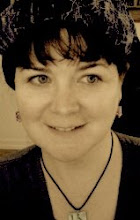Eliza Blunt was there for two terms in 1811, and her account was attached to a "Dr. Blunt."(A complication for this post is that the Southern surname Blunt is spelled various ways, often as Blount in North Carolina. I'll spell it as I see it in the various sources.)
Martha Blunt was there for two terms in 1817, and her account was attached to a Captain Richard Blunt.
Mary Ann Blunt was at the school for five sessions, 1814-1816, and her account was also attached to Captain Richard Blunt. There's also a notation that she's from Georgia, and that she married in 1822.
********
UPDATE FEBRUARY 2016: Looking at my old notes today, I'm thinking there might also have been a Louisa Blunt among the students in 1809 (that name is on a roll sheet from that year). It's possible I mistranscribed it in the 1990s, but I don't think so--the handwriting is pretty clear. So huh. Online I'm finding a Mary Louisa Blunt who married a Virginia man named Moseley in 1812, had five children, died in 1855 in Georgia--that would make sense if she was a teen in 1809. ********
Okay, let's see what we can see in the genealogical sources and sites online.
Richard Augustus Blount's papers are at Georgia College and State University in Milledgeville. Blount (1774-1849) was a postmaster and active in Methodist Church matters. He was also a translator for various state dealings with the Cherokee Nation. When he died, his daughter Mrs. Mary Ann Sanford inherited slaves from his estate, delivered in 1853.
The box listing for Richard A. Blount's papers has an aha! item: Folder 3 in Box 2 contains "A small carefully written letter from Marianna R. Blount, age eleven, to her parents in Lebanon, Washington County, Ga., dated Sparta March 1st, 1813. A letter from Sally Ridley to Marianna Blount, at school in Warrenton Virginia, no date." And yes, there was a Sarah Ridley at the Mordecai school, in Warrenton, North Carolina. Miss Ridley attended the school exactly one term, so I can say with some assurance that the letter (which I haven't seen, but will try to get a copy of) is from the first half of 1810. Ridley being Mary Ann's middle name, Sally might have been a cousin?
Miss Mary Ann Blount, daughter of Col. Richard A. Blount, married Mr. John W. A. Sanford of Baldwin County, at Lebanon, Washington County, Georgia, on a Wednesday in late November, 1822, according to the 3 December 1822 Chronicle and Sentinel. John W. A. Sanford (1798-1870) was a college graduate who would later serve in Congress, briefly (for a few months in 1835), fought in the Cherokee War, and be elected to the Georgia Senate. From 1841-1843 he was Georgia's Secretary of State. His papers are at Georgia State University. John Sanford and Richard A. Blount worked together in the late 1820s on the Georgia-Alabama Line Boundary Commission.
John and Mary Ann Sanford were sued just after the war by a Thomas Finney, guardian of an Emily P. Gibson. Apparently John Sanford had a debt from before the war, and Mary Ann co-signed the note. The case focused a lot on Mary Ann's separate assets: the Sanford's plantation and many of their 50-60 slaves legally belonged to Mary Ann, not to John. The case against Mary Ann went to the state Supreme Court in 1870, to further consider women's obligations for the debts of their husbands.
Marianne Ridley Blount Sanford (the name as it appears on her tombstone) was widowed at age 68, and died at age 77.
Mary Ann's son John William Augustine Sanford Jr. (1825-1913) was elected Attorney General of Alabama several times from 1865 to 1876, and clerk of the Alabama Supreme Court. He was a colonel in the CSA, and surrendered at Appomattox.
Mary Ann's younger son Richard H. Sanford (1829?-1841) was stabbed to death at age twelve, by the fourteen-year-old son of a prominent lawyer. The boys were students together. Young Sanford was bullied and taunted by William A. Harris, who used a borrowed knife to attack Sanford. Sanford died ten days later from his wounds.
Back to the Mordecais: In their letters, there's a mention of Richard A. Blount trying to convert Jacob Mordecai to Christianity. They also mentioned Mary Ann passing through Warrenton in 1821, on her way to Ballston Springs NY (a popular spa). The Mordecais received a printed wedding invitation from her in 1822. But they misheard (or miswrote) her spouse's name as "Saunders," and that's how I had her listed in my dissertation: as Mary Ann Blunt Saunders, instead of Marianna Blount Sanford. Another reason to go back over this material!
(I'll be back to deal with the other two Blunts. Mary Ann's story took up all my time today.)
